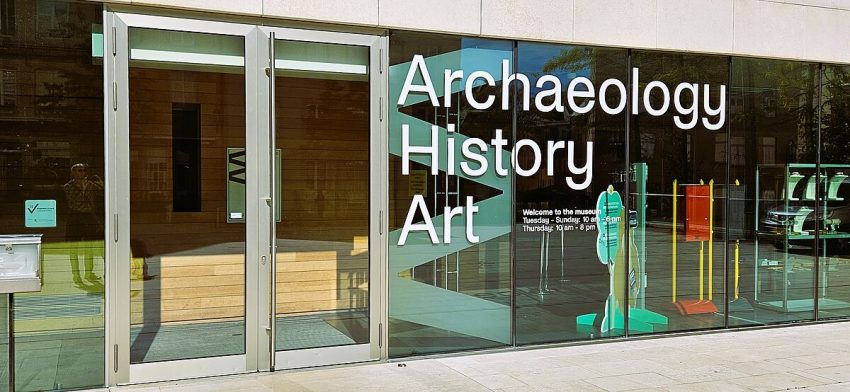
On November 2, we organized (Ralph Dekoninck, Gian Maria Tore and Nicolas Marin Bayona ??) a workshop at the National Museum of Archeology, History and Art of Luxembourg (MNAHA) with students from the Catholic University of Louvain (UCL). The objective of this visit is twofold: on the one hand, to discover the works that make up the MNAHA collection, its temporary exhibitions and the work of the museum’s professionals; on the other hand, UCL students had access to bibliographic materials and in situ works of the preselected paintings in order to help us in the production of a model for the augmented analysis of works of art.

First of all, we visited the back rooms of the museum, the documentation services, the archives and the library in order to better understand the research and conservation work carried out by the institution, rooms in which the consultation will take place subsequent bibliography. On this occasion, the second part of the workshop consisted of a visit to the painting collection of the Old Masters section of the Fine Arts department, which includes an important series of pictorial works from the 13th to the 18th centuries.
This visit was led by Ruud Priem, Head of Department & Curator of the MNAHA collections, who gave us a rich overview of the different museographic choices and the museum’s acquisition policy. With the help of a screen, we were also able to trace the history of certain works and their circulation as objects (from their creation, their passage through different hands, changes of owners until their arrival at the museum ). Thus, by comparing with digital images, we were able to establish relationships which outline circulation links between representations, between themes or iconographic motifs and the social history of the objects represented.

Secondly, after an initial contact with the preselected works, the students were able to consult the documentation available at the museum, documentation which will help them carry out an in vivo analysis of these paintings. To this end, the museum staff lent a hand to the students in consulting this bibliography. After reading the various information available, we went to the rooms of the museum where each student was able to develop their comments on their respective work.
Commentaries on the history of the works, on the context of their creation, as well as iconographic and stylistic analyzes were offered to us. It should be noted that the spontaneity of certain interventions made it possible to deepen or even increase the analysis of the works. By emphasizing these aspects that are more surprising or inexplicable by the discipline of art history itself, these contributions have enriched our questioning on how to establish a relevant model for analyzing pictorial works.

Some of these objects analyzed like Mary Magdalene (around 1630) by Massimo Stanzione, Charity (after 1538) by Lucas Cranach the Elder (1472-1553), Rosso Fiorentino (1494-1540) Bacchus, Venus and Cupid (ca. 1535 – 1539), Suzanne and the Old Men by Jean François de Troy (1679) -1752) or Cupid surprising Psyche at night (ca. 1590) by Abraham Bloemaert (1566-1651) are an integral part of the analysis corpus of the Augmented Artwork Analysis project.
The intervention of the students from Louvain accompanied by comments proposed by the organizers and participants of this workshop such as Rudd Priem (MNAHA), Ralph Dekoninck (UCL), Gian Maria Tore (University of Luxembourg), Nicolás Marín Bayona (University of Luxembourg / UCL) have undoubtedly enriched our previous questions and contributed to opening new avenues for proposing a unitary model for analyzing the augmented work of art. To conclude our day, the workshop ended with a guided tour of the History and Art exhibition. Painting in Luxembourg in the 18th century by the hand of one of its commissioners, Henri Carême. This exhibition is the result of six years of research carried out by Henri Carême as part of doctoral work whose thesis, defended in January 2023 at UCL, traces the life and production of the painters who resided and/or Il worked in the 18th century in Luxembourg.


